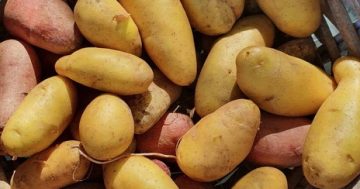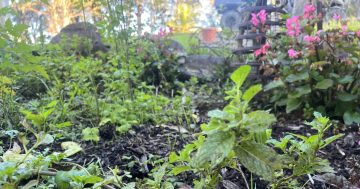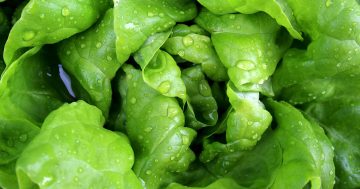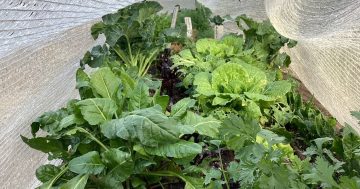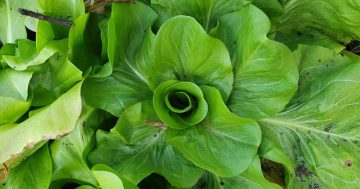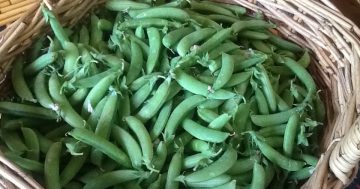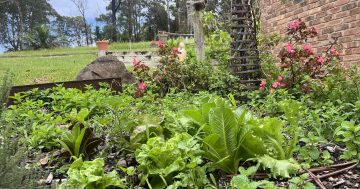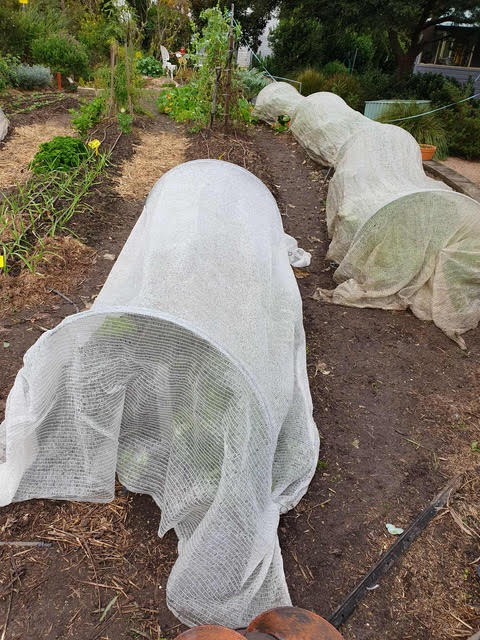
It’s time to make sure your veges are covered. Photo: Wynlen House.
If you haven’t put up frost protection for your autumn plantings, you still have time. And given winter has finally arrived, your plantings will appreciate a little protection from our long frost season.
Most late autumn and winter vegetable plantings are relatively frost hardy, coping well with an occasional light frost (1 degree Celsius to -2C). However, in the Canberra region frosts can be ongoing varying from light to hard with temperatures dropping below -2C. In these conditions all vegetables benefit from some kind of protection.
Leafy greens such as silver beet, bok and choi joi, lettuce, radicchio, endive and English spinach all appreciate protection. Unfortunately frost protection is unlikely to prevent hard frosts from affecting vegetables. It does however mitigate the effects significantly by warming the soil and ambient air a good few degrees and allowing plants to keep growing.
The best sort of frost protection fabric retains heat and allows air, light and water penetration. Fabrics made from polypropylene or polyester are good at retaining heat, and are lightweight, an added advantage. They can be left in place the whole season, although raising them every so often, especially on a sunny day, will give a little extra air flow and a dose of full natural light to the plants underneath.
It’s worth noting our friends at BoM suggest it’s not going to be as cold as we might expect this month, which is pretty good news for everything in the veggie patch.
If you want to plant seeds now, they are best started indoors utilising heat pads as well as the sunniest, warmest spot in the house. If you have the set-up needed for winter propagation, start with the big brassicas such as cauliflower, cabbage, broccolini and broccoli. Move on to seeding Asian greens, salad greens, perhaps some English spinach, all of which can be planted out during the winter months under frost protection fabrics or systems.
The average seed takes six to eight weeks to turn into a strong seedling so you will be planting mid to late winter. When planted out they will grow slowly under cover and be ready to take advantage of warmer days when the season changes with a surge of growth.
Garden jobs are numerous in early winter. Feeding, weeding and mulching are among the most satisfying. Working through these tasks, or at least starting them, allows us gardeners to feel we are making the effort to set the veggie patch up to survive well over the colder months.
If you have compost ready to use or can purchase a good quality mix (pH of 6 to 7), spread it around plantings or on the sides of the beds. A small hand bucket is a good tool for this job. Fill it up, replenish from a barrow load, and just shake out a generous amount around the plants as you move through the garden beds and around potted plants. This little dose of compost brings nutrients and microbes to the soils for plants as a winter booster.
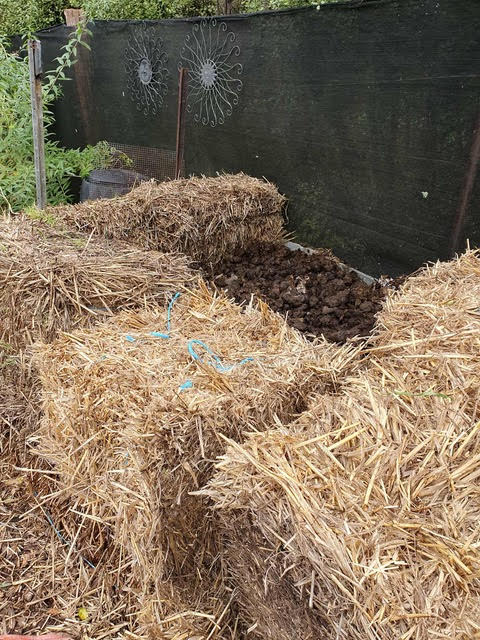
Cover compost in fresh horse manure to generate heat. Photo: Wynlen House.
Add a little fertiliser to the compost; blood and bone, lime, with lucerne chaff mixed through to pack an extra punch. Many gardeners believe fertilising in winter is wasted as plants don’t grow much and so take up few nutrients. However, such views are being challenged by biological farming practitioners suggesting that although plants may not be taking up nutrients, actively growing microbes are utilising them and continuing to increase soil nutrient availability under every condition except in frozen soils. So adding more fertiliser than you think may be needed supports microbial activity which helps soil condition and maintains soil health.
Weeding is another of those must do activities. The compulsion to weed lies in the great sense of accomplishment, often disproportionate to the activity, that makes you feel you are getting a reward for very little effort. One job is dislodging weeds from pathways. The stirrup hoe is a stand-up weeding tool that works well for this job. Choose one where the hoe head actually moves back and forth rather than is rigid. The back-and-forth movement is essential for undercutting or cutting through the root system of palm-size or larger weeds.
Another weed attack to launch is disturbing and dislodging any young weed seedlings among maturing vegetable seedlings. The wire weeder does a stellar job in situations like this where you need to delicately go around the base of younger plants and between plants and rows.
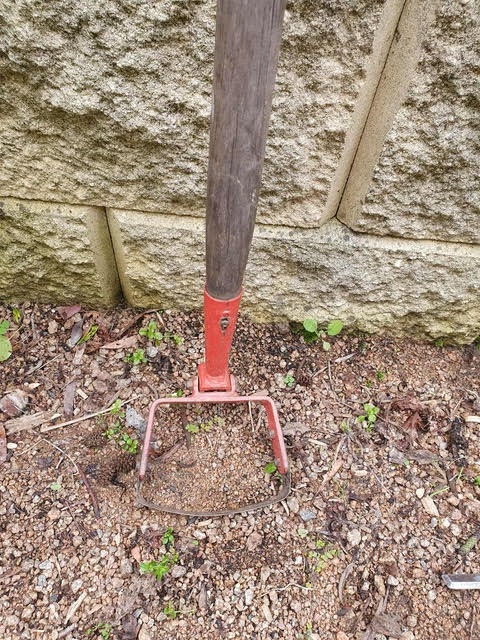
The stirrup hoe helps with pesky weeds. Photo: Wynlen House.
The last job, if you haven’t already completed it, is to lay a foundation of mulch. A 10cm thick layer is ideal but only if you are growing vegetables in the drier parts of our cold climate region.
Unfortunately, parts of our region have hardly had any significant rainfall since November 2024. Other parts have had regular periods of very high rainfall. No mulching or very light mulching is helpful in these areas if only to mitigate the effect of regular heavy rainfall.
Remember, mulch prevents soil moisture from evaporating and harbours insect pests. In locations having periods of heavy rain, mulch may need to be removed intermittently to allow very wet soils to dry out a little.
Either way, enjoy your winter garden and keep growing!
Original Article published by Helen Lynch on Region Canberra.




